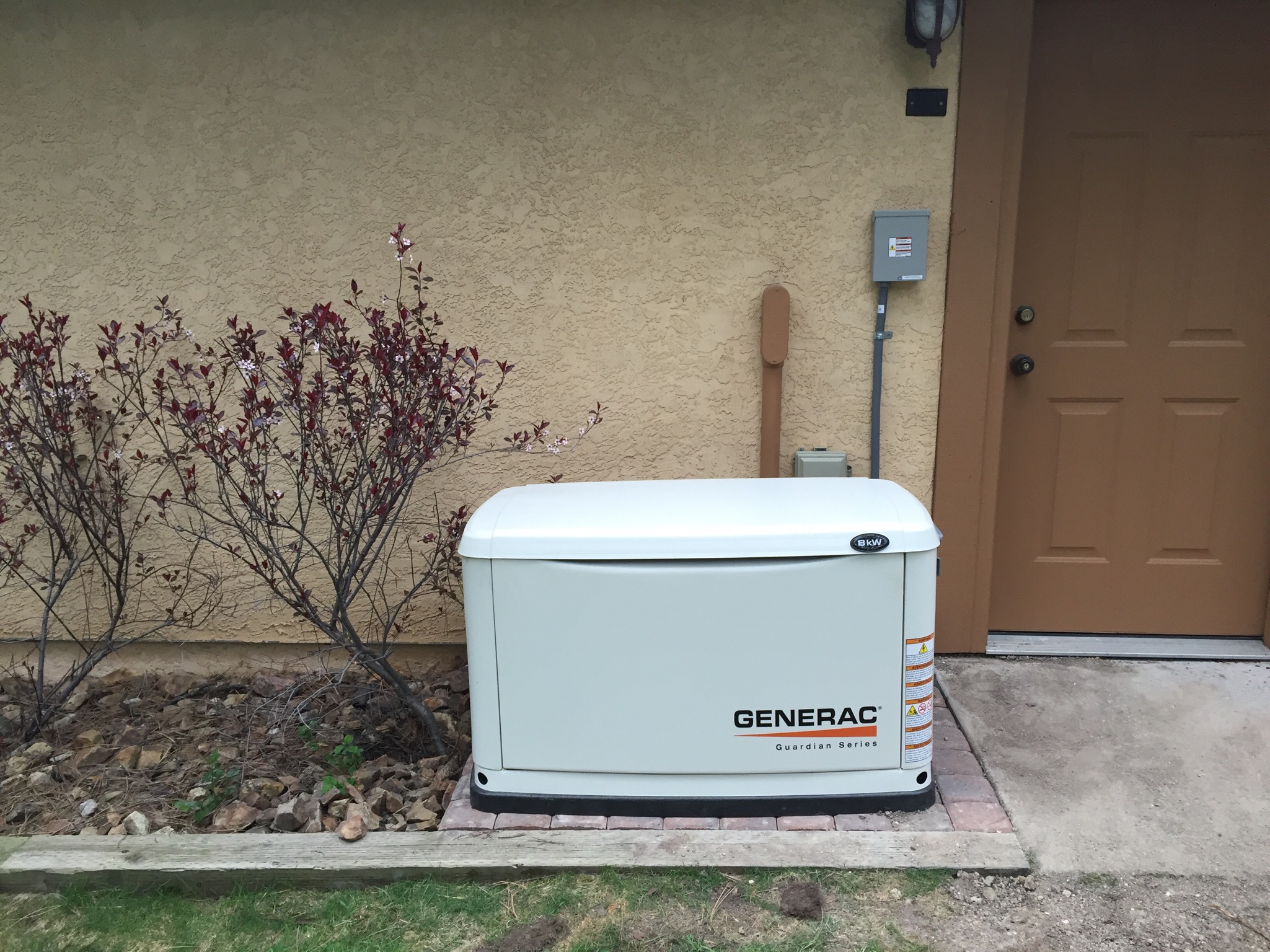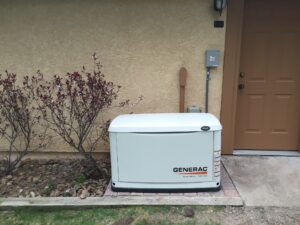Home Generator Installation: Why You Should Have It Installed by a Pro

If you’re planning on purchasing a whole-home generator, have it installed by Electrician West Palm Beach. A professional will build a concrete pad and perform plumbing and electrical rough-ins to meet state and local building codes.
He will also install the transfer switch, which he will place indoors beside your electrical panel. It will energize the circuits listed on one of your two breaker panels, leaving the other unaffected by the generator.
Various factors can affect the cost of a home generator installation. Most significantly, the type and size of the generator determine the cost. Whole-house units that can support all of a home’s power needs are the most expensive, as are standby generators that run automatically. Fuel type also impacts the price. Natural-gas units are more costly than propane models, though the latter may be a better option if your home is already equipped with a natural gas line.
A professional installer should evaluate your property and determine the best location for the unit, taking into account factors such as proximity to your home, electrical service, and fuel source. They should also note whether your community requires a permit, which can add to installation costs. Lastly, the installer should prepare an estimate of project expenses and present it to you for approval.
Once the site assessment and generator selection are complete, a licensed electrician will install the transfer switch. This will connect the generator to your home’s circuit breaker panel and allow you to select which appliances are powered during an outage. The transfer switch installation will take 3 to 4 hours, and the labor costs alone will be around $1,200.
If you have the money, a professional can also install an electrical subpanel to help prevent overloading your home’s main panel during an outage. If you don’t have the money for a subpanel, you can use heavy-duty extension cords to connect appliances to your generator. However, it’s important to make sure the cords are rated for the amount of current they’re able to handle and are properly installed to avoid electrical shock or carbon monoxide exposure.
If you’re relying on a portable generator, you can also use a large, sturdy gas cylinder to store fuel for the unit. Propane cylinders are recommended for these units because of their high burning efficiency, but natural-gas models are available as well. A full tank can power a home for about a week or more, and most propane sellers offer plans to regularly refill them at a discounted rate as drivers make their deliveries.
Safety
A generator is a great way to keep your home comfortable during a power outage, but you need to make sure that you’re taking the right safety measures. Failure to do so could result in carbon monoxide poisoning, electric shock, or fire. There are many ways that you can practice proper generator safety, but the most important is to read and follow the manual provided with your unit.
Some people choose to power their homes through a generator by plugging it directly into their house wiring, but this practice is highly dangerous, presents an electrocution risk to utility workers and neighbors who share the same transformer as your home, and bypasses some built-in household circuit protection devices. The best and safest option is to have an electrician install a transfer switch.
The transfer switch removes your house from the generator and allows you to only connect your appliances that you want to be powered during a power outage. This will ensure that you don’t overload your generator and reduce the chance of a fire or an electrical short circuit. The electrician can also ensure that the generator is wired properly to avoid backfeeding, which poses a risk of electrocution to utility workers and other residents who live in your community.
When you’re not using the generator, make sure that it’s on a concrete pad or other solid surface that can support the unit. The generator should be at least five feet away from your house, and it should never be under a tree or in a shed, both of which can fall on it. You should also consider the proximity of the generator to your doors, windows, and vents in order to prevent dangerous exhaust fumes from entering your home.
Those who choose not to have a transfer switch installed can still safely use the generator by connecting their appliances directly to the unit with heavy-duty extension cords that are rated for outdoor use and have a wattage rating at least equal to the sum of the connected appliance loads. The extension cords should be free of cuts and tears, and they should always be plugged into an outlet that’s grounded in accordance with local electrical codes.
Installation
If you’re considering a whole-home generator or standby generator (the type that hospitals and important government buildings use) for your power needs, it is crucial to have the unit installed by professionals. The process involves complex electrical and plumbing work, and making a mistake can result in fires, injuries to utility workers, or carbon monoxide poisoning.
The first step in the installation process is for the team to visit your home and determine what size generator you need to meet your backup power requirements. The team will take into account the number of large appliances in your home, how many lights and fixtures are connected to those appliances, as well as your average daily energy consumption. This helps ensure that you’re not underpowered or overpowered, which can cause damage and expensive repairs.
Next, the team will prepare a pad for the generator to sit on. This should be a gravel or concrete surface, as it can withstand vibrations from the generator when running. The generator will also need a gas line and an electrical connection to your house’s panel. The plumber will connect the gas line to a propane tank or natural gas, while an electrician will wire the generator to your home’s electrical system. A transfer switch will also be installed, which senses interruptions in your home’s current and automatically switches the generator over to power your appliances.
Once the installation is complete, the team will test the generator to make sure it works properly. They will also perform any required maintenance, such as lubricating moving parts. Depending on the size of your generator, it may need to be serviced annually or more often to keep it in good working condition.
It’s also important to note that a permit is usually necessary for installing a home generator. The best contractor will know the exact steps to follow to obtain the permits you need and will work with your local inspector to ensure that everything is completed correctly.
Maintenance
Home generators are designed to run for extended periods of time, but like any mechanical device, they require regular maintenance. The procedures vary depending on the particular equipment. For example, most standby generators will need routine visual inspections to ensure the unit is functioning correctly. This should include checking the enclosure for signs of rodents, ensuring that the oil level is correct, and inspecting the electrical system for any issues.
In addition to the basic maintenance procedures, a homeowner should always keep a copy of their generator’s manual. This will help them identify problems early and resolve them before they become serious. In most cases, the manual will provide specific procedures for cleaning and servicing a particular model of generator. The manual should also explain what types of maintenance are required for the generator to operate safely and efficiently.
The first step in home generator installation is to select a location for the equipment. It should be close to the natural gas line and electric meter, but no closer than 5 feet from windows and doors. Ideally, the generator should be located on a concrete pad, which will minimize maintenance costs and prevent vibrations from damaging the unit. It should also be accessible for service technicians and have a clear working radius.
Next, homeowners should check with their homeowners association and local building department to ensure that the project is permissible. A good contractor will take care of obtaining all necessary permits and will schedule tradesmen to complete the work within the permit’s allowed timeline. It is also a good idea to check with the Better Business Bureau to see how long a company has been in business and how they deal with customer complaints.
When selecting a contractor, it is best to choose one who specializes in home generator installation. They will have the expertise and experience to handle the complex installation and the required maintenance. In addition, they should offer a warranty and be licensed and insured. A good contractor will also have a list of references and testimonials. If possible, try to get three quotes from different contractors.
